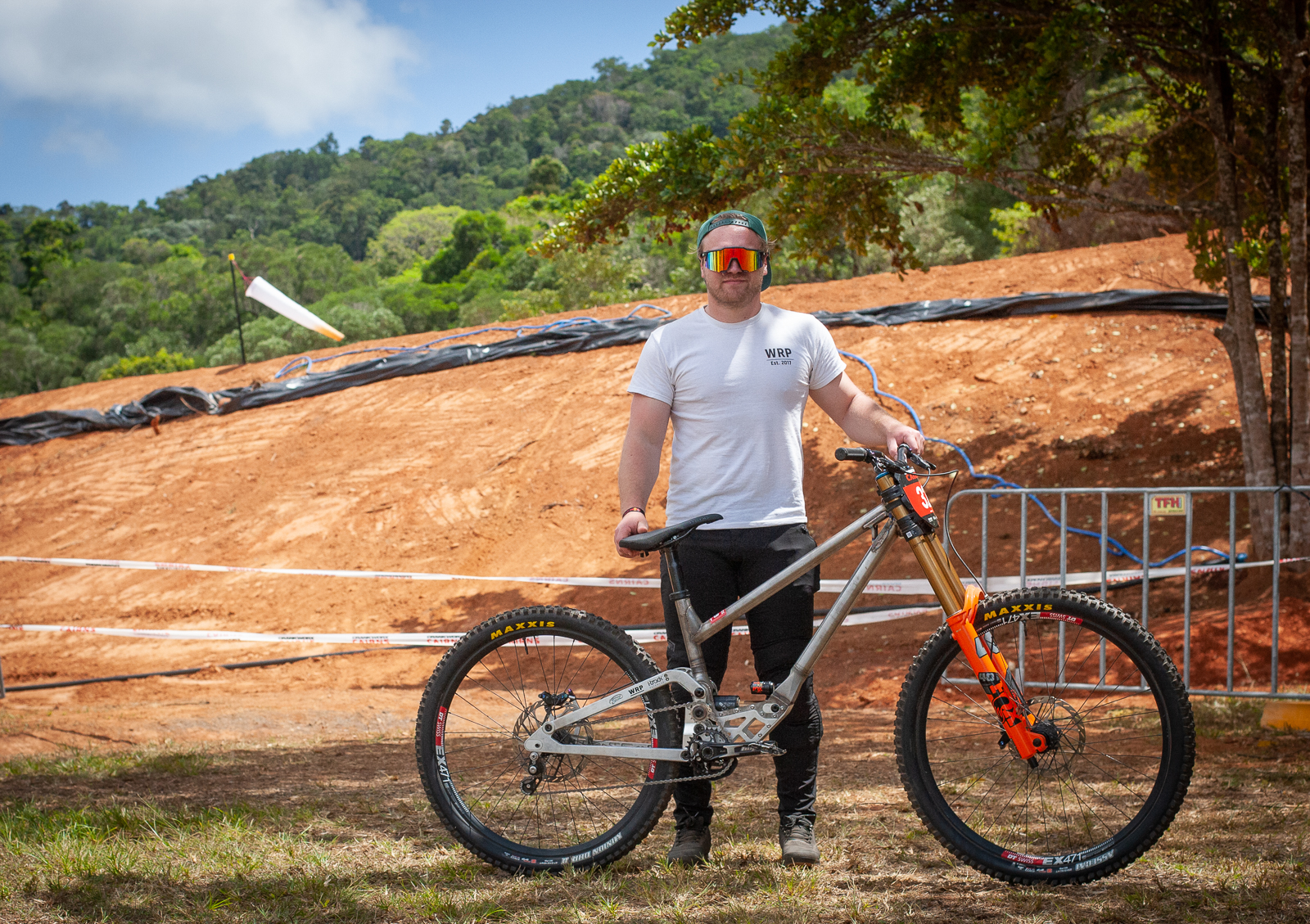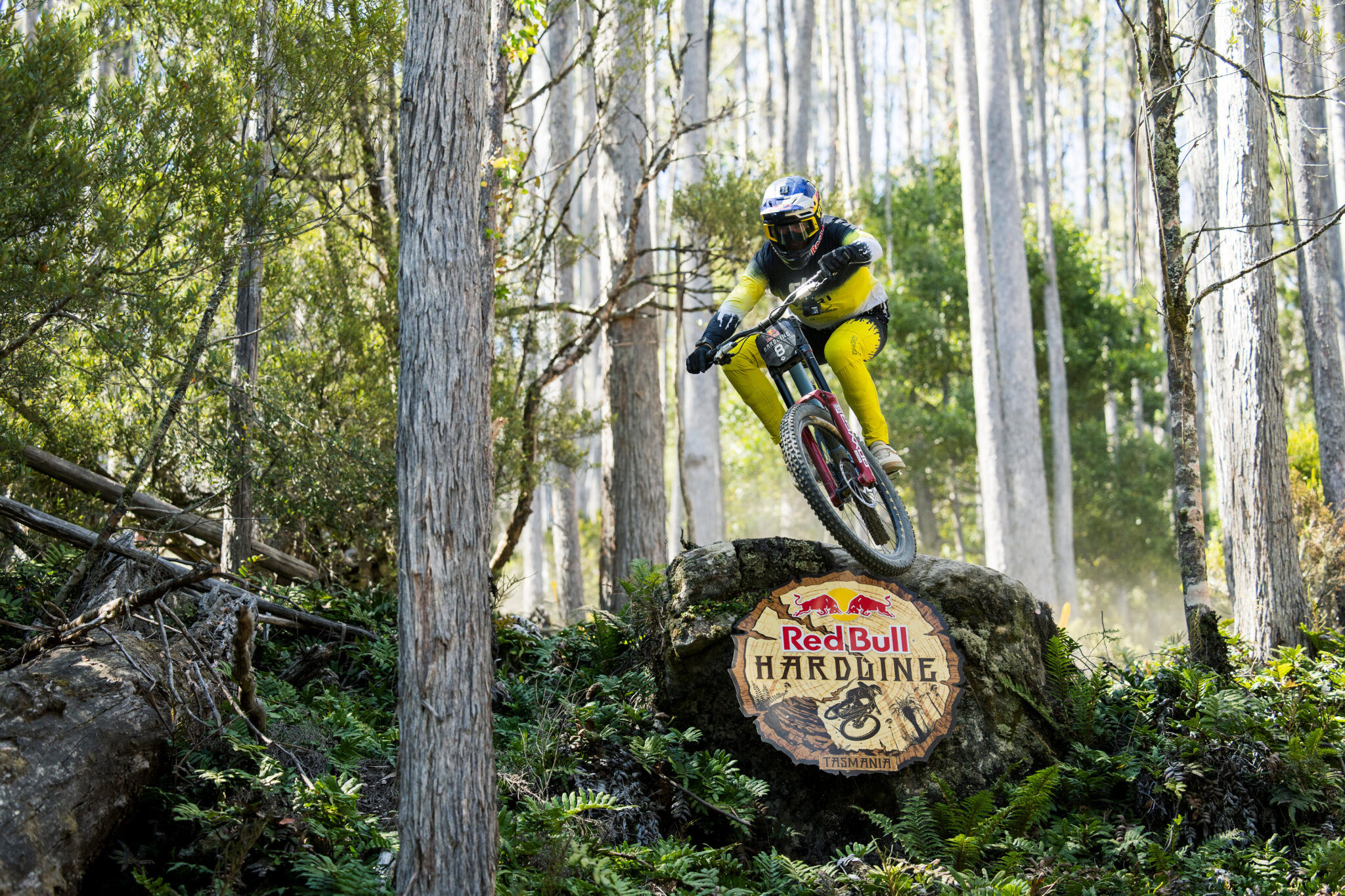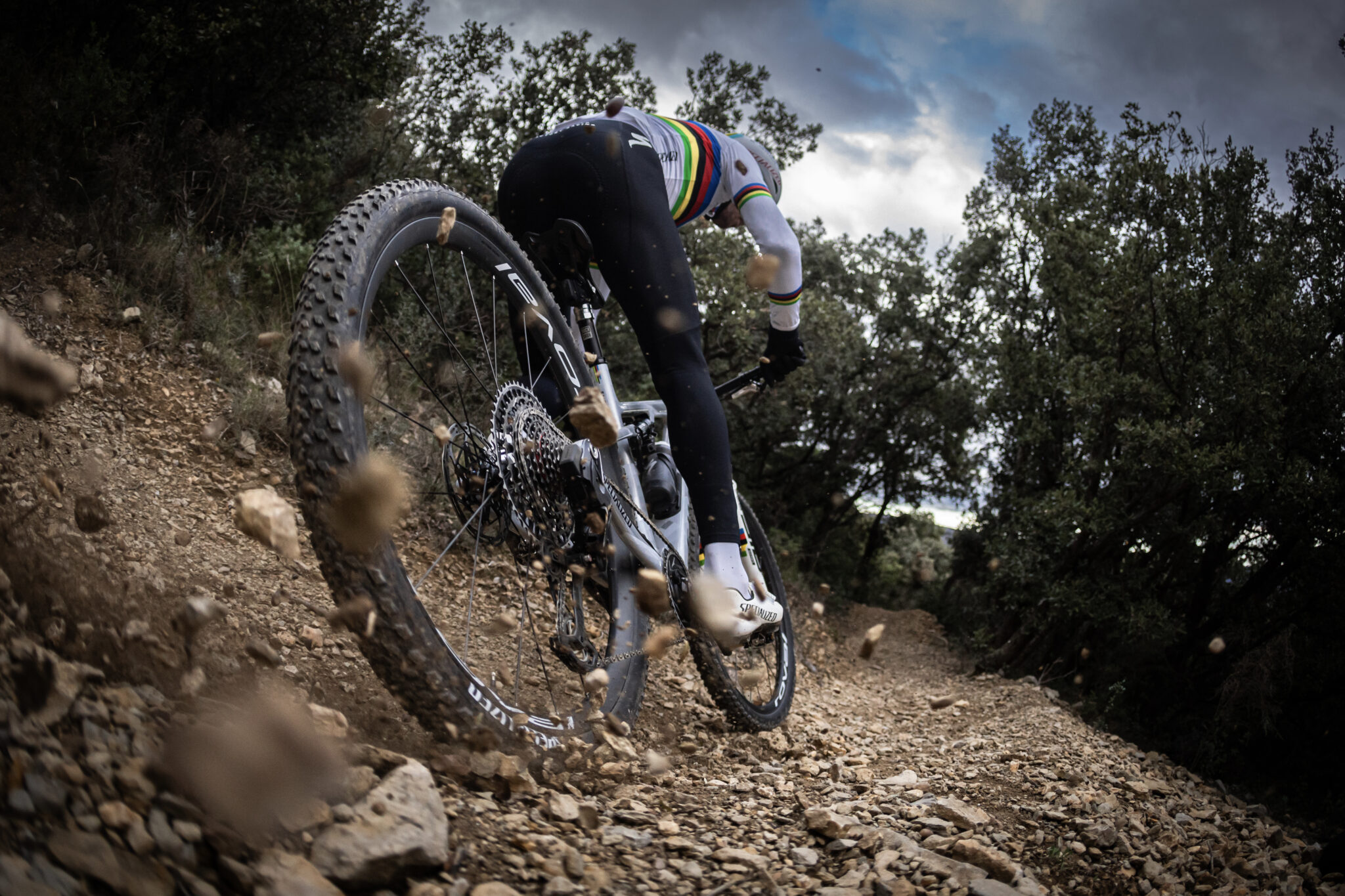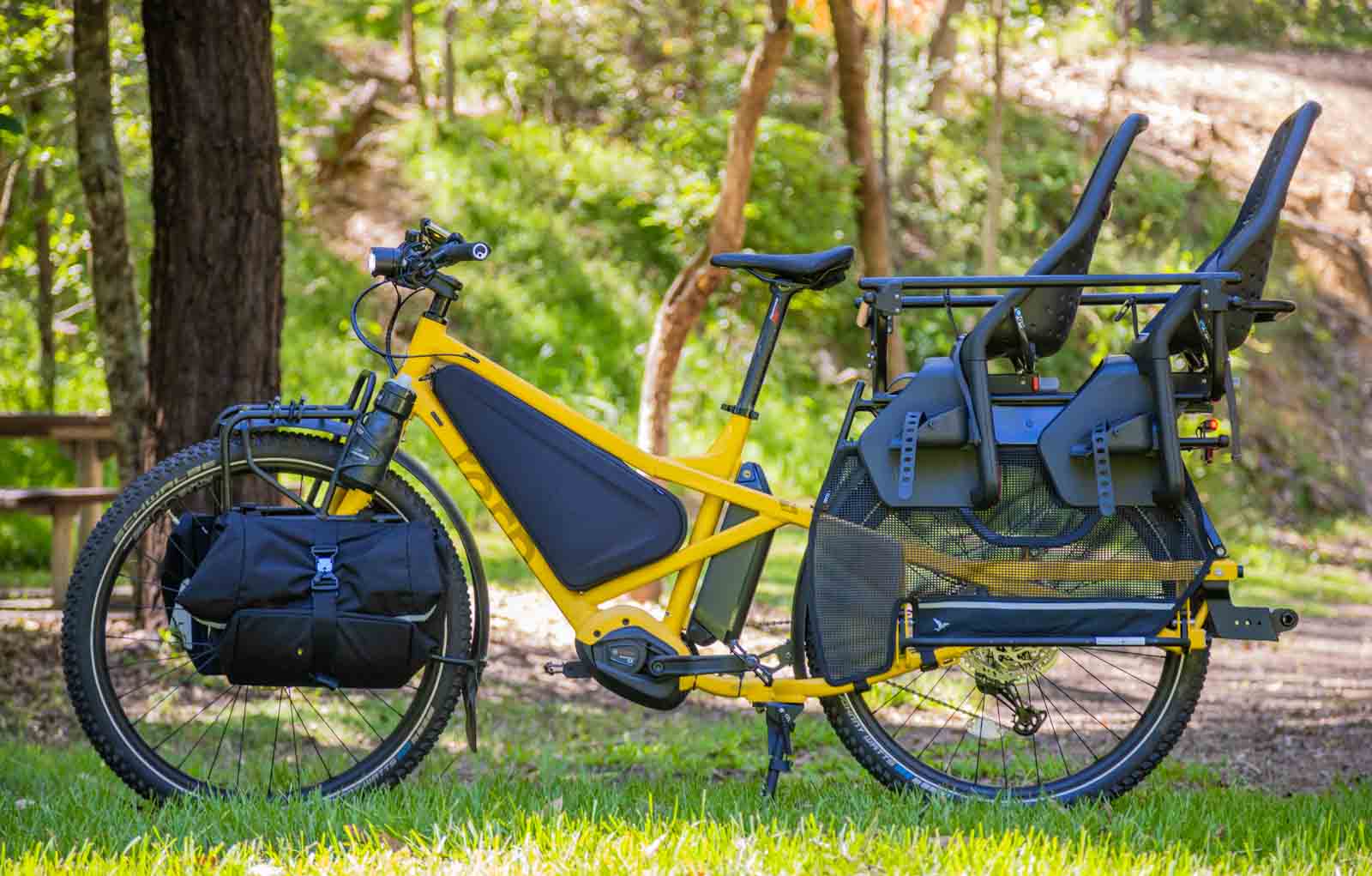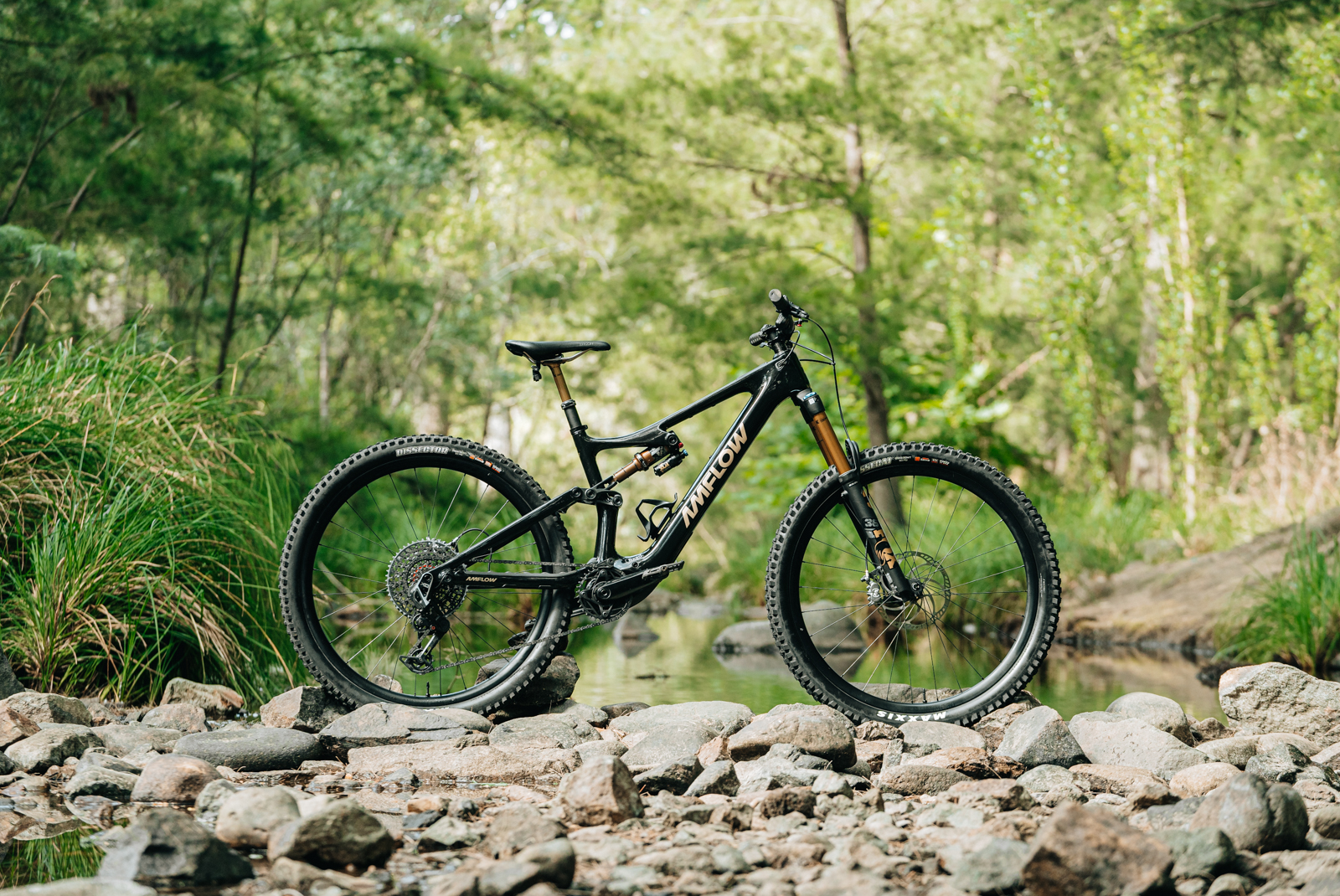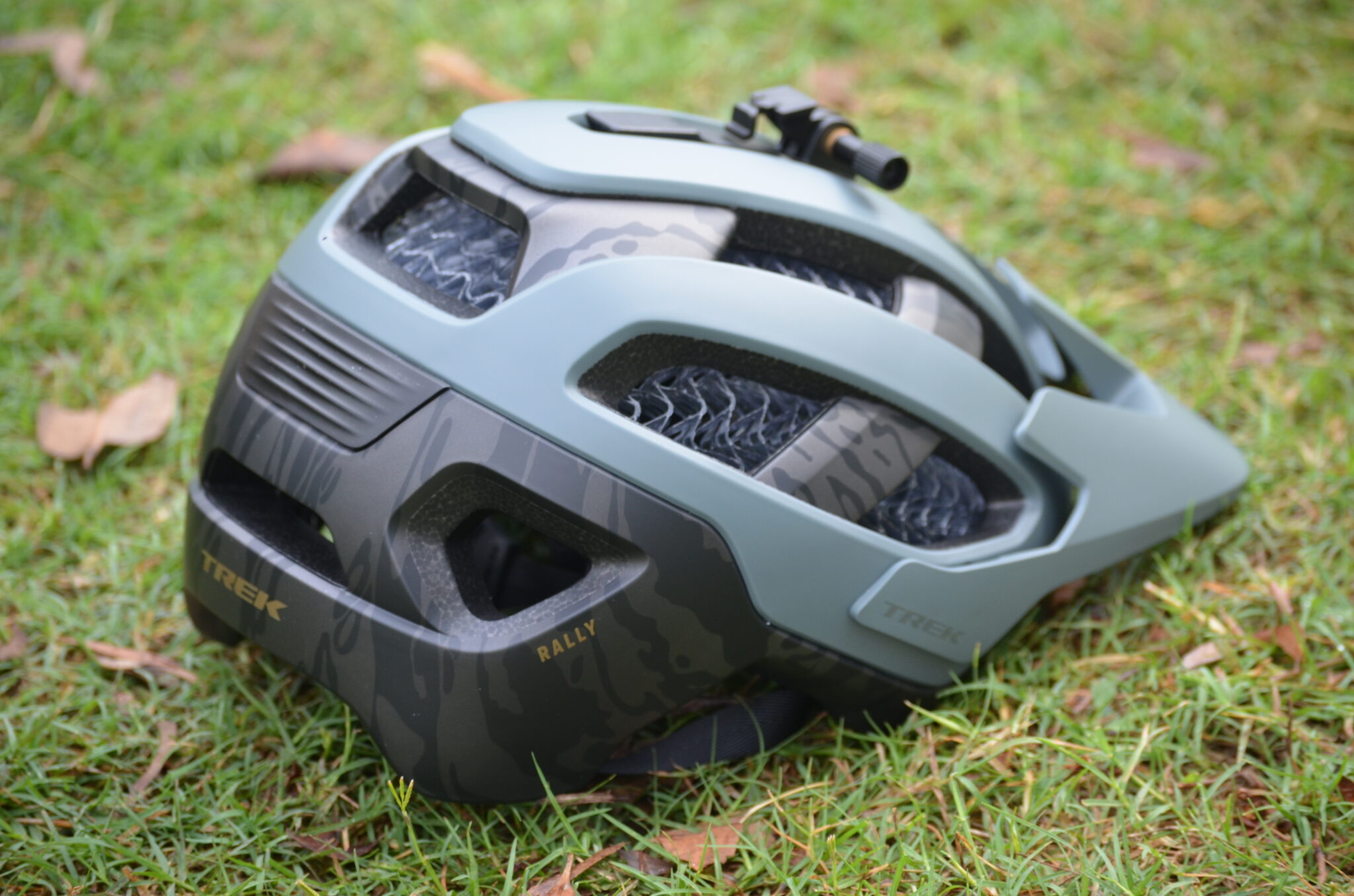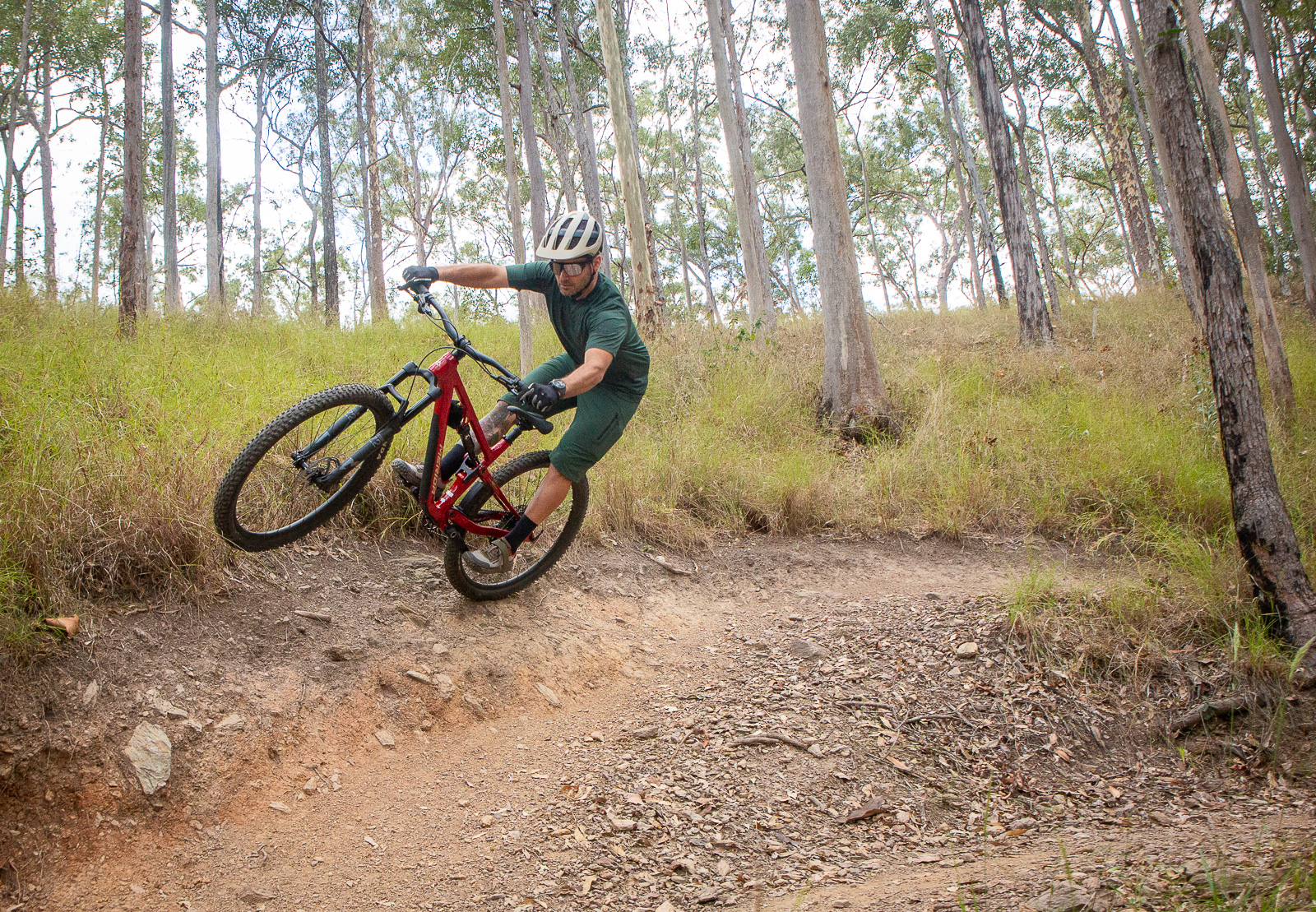MADE IN AUSTRALIA: Williams Racing Products and Trinity Mountain Bikes
Williams Racing Products and Trinity MTB are the epitome of being made in Australia and being a success story.
Words: Will Shaw
Photos: Mike Blewitt
Founder Mic Williams conceives, designs, and produces Williams Racing Products in Geelong, and his products are ridden by riders across the world. Trinity Mountain Bikes are another Australian based company Mic is a co-founder of, and they’re working on a unique bike project. Editor Mike Blewitt caught up with Mic to discuss the growth of WRP and the third prototype Trinity Mic was racing on.
AMB: Tell us a bit about Williams Racing Products, how it started and where it’s at now?
Mic: I’m an engineer by profession. I earned a Bachelor of Engineering and graduated back in early 2017. At that time, I’d never really done much mountain biking, I’d just got back from racing BMX in America but part of my thesis at Uni was what you now know as the CentreHub. To test that I got into mountain biking, I wasn’t thinking about racing at an elite level back then, but it snowballed, and I ended up doing some mountain bike racing overseas.
AMB: You make a lot of tuning options for bikes that work well to begin with. What comes first, hearing that people want to tweak a bikes characteristics, or you looking at a design and thinking it could be improved on?
Mic: It depends on the part. As hippie as this sounds, I’m a big believer in the Yin and the Yang; you can get an advantage somewhere, but you’ll always sacrifice something else, so it depends on the desired end goal. For me it was really in 2019 when the UCI lifted the rules of same size front and rear wheel in World Cup Downhill. I was doing some DH that year with my friend Jacko White and we were at Snowshoe where Danny Hart won on a mixed wheel Saracen. I’m not that tall at around 5’8” and it was immediately apparent that there was something to the mixed wheel thing in certain circumstances.
I don’t always have the best ideas. Often, I’m in the lift line or on the shuttle talking to guys and hear about how the bike could be better, perhaps even with a bike model I didn’t even know existed. When people hit me up, and we deem it relevant enough to need a custom part I always enjoy the product development phase to bring that part to life. Often, they’re our best-selling products, too.
AMB: Where does the feedback come from when it comes to product design?
Mic: One of the first products I made was a Mullet Yoke for a Specialized Enduro that I originally made as a one off for Andrew Howieson. I made him one, sent it to him and said ‘good luck’ not thinking much more.
He rode it and was like ‘yeah dude this is sick’. He’d posted photos about it so then people were contacting me directly to buy them. After a while there was enough people messaging me that I thought I better have a web store to sell these rather than people contacting me directly. With a product like that the testing is done organically because I made the part for Andrew, he rode it a bunch and people liked it. For something like the CentreHub though, I was riding that for four years before I told anyone about that.
That’s a good thing about riding myself, I would get imposter syndrome if I wasn’t riding something I was preaching to people to buy.
AMB: Tell us about your workload, are you doing all the production and admin for WRP?
Mic: Currently I’m working on everything. Most of my CNC work now gets done in Melbourne. WRP is based at Deakin Uni, so we were making the one-off stuff on the machines in house, but that quickly became unfeasible when we got into larger batch orders. For example, the Specialized yokes I was talking about, I do a batch of those at about 150 at a time.
All the bearing pressing, assembly, etc is all done in house and other than the batch stuff I still make it myself. I’ve got an intern, Mitch who’s a good lad. He’s in his third year of mechanical engineering at Deakin Uni and doing his own project that’s around a custom top crown, but he also helps me with the packing and shipping and whatnot. He also shreds.
AMB: Seeing as you’ve got a global presence, are there restraints to making your products in Australia, and are there further challenges ahead with this when it comes to growth?
Mic: Scaling up is hard and mainly around the cost of making things in Australia. Anything I make off sales I put straight back into the next prototype. I look at stuff I could do with big coin, but at the same time this model keeps things organic.
AMB: Is your focus on future projects or the existing product range?
Mic: I’m always thinking about new products. It might sound crazy, but even coming to an event like this (Crankworx Cairns) I’ve had to park projects for a week and that gives me anxiety, I’m thinking ‘I need to be working on this, it’s seven days that I’m not working on it.’
AMB: Tell us about Trinity Mountain Bikes, how it all started and what your involvement with it is?
Mic: I had just started WRP, and Nigel’s company (Engineered to Slide) was in the bay next to me at ManuFutures at Deakin Uni. Chase Warner had the original concept for Trinity and had contacted Nigel to manufacture it. I was invited onto the team after we’d had some initial design consultations and about 6 months later was when you saw V1 debut at the Handmade Bike Show.
Between the 3 of us friends there’s a designer, an engineer, and a fabricator, although we all share responsibilities.
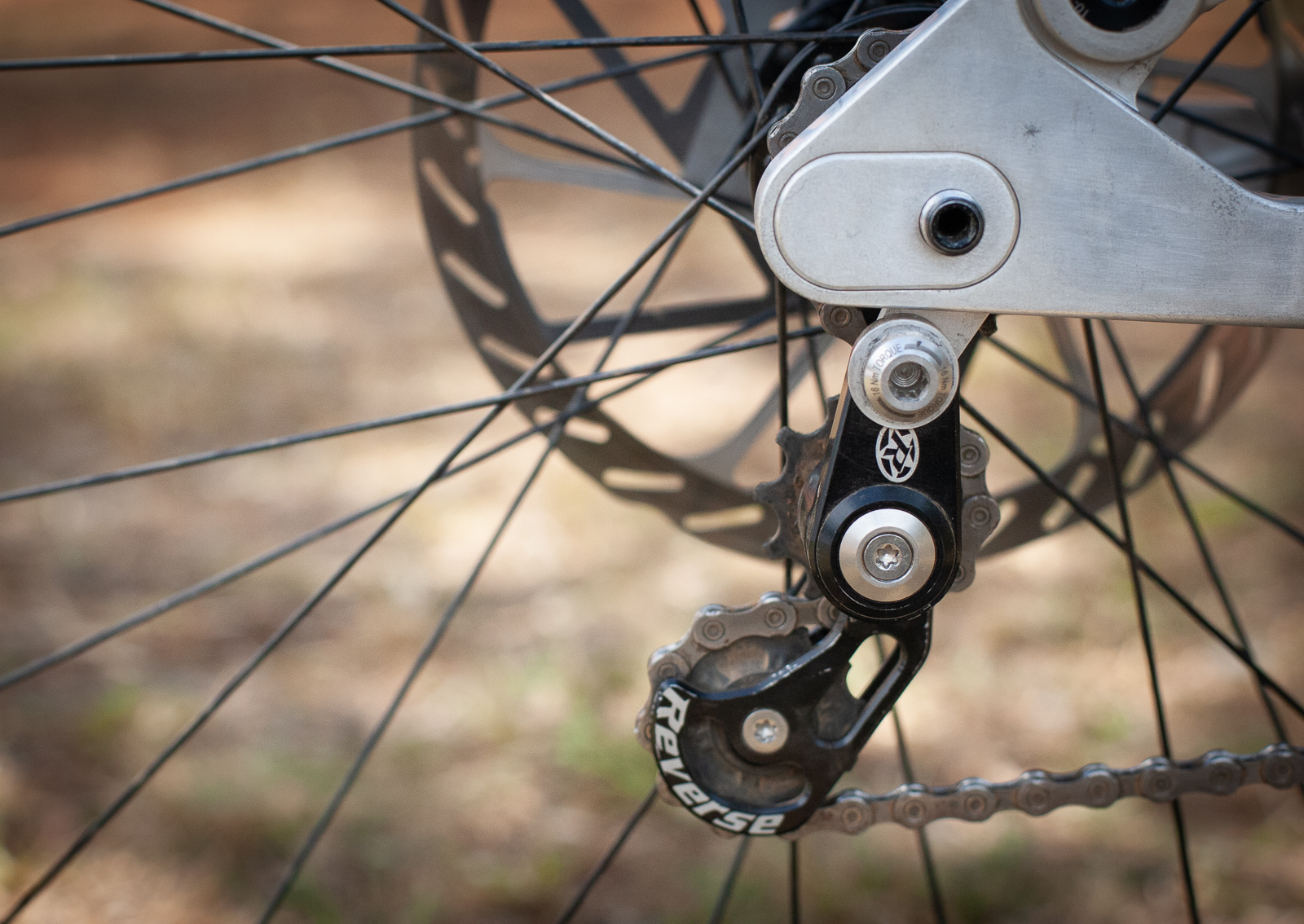
Chase’s initial design concepts were of a bike that would accept a gearbox like Pinion. You’ve probably seen in V1 and V2 we had lattice side plates with a receiving bolt pattern for a gearbox or a WRP bolt in bottom bracket. On V3 we’ve got similar lattice side plates but with an incorporated bottom bracket, which makes things really clean.
With this design you can drop out the side plates and replace them with those that accept a conventional gearbox. During our testing it became apparent that gearbox technology can become a lot better; the geometrical space of the lattice can also accommodate our own WRP gearbox that I’m developing.
AMB: It looks like you can run different shock lengths, does this allow for different amounts of travel?
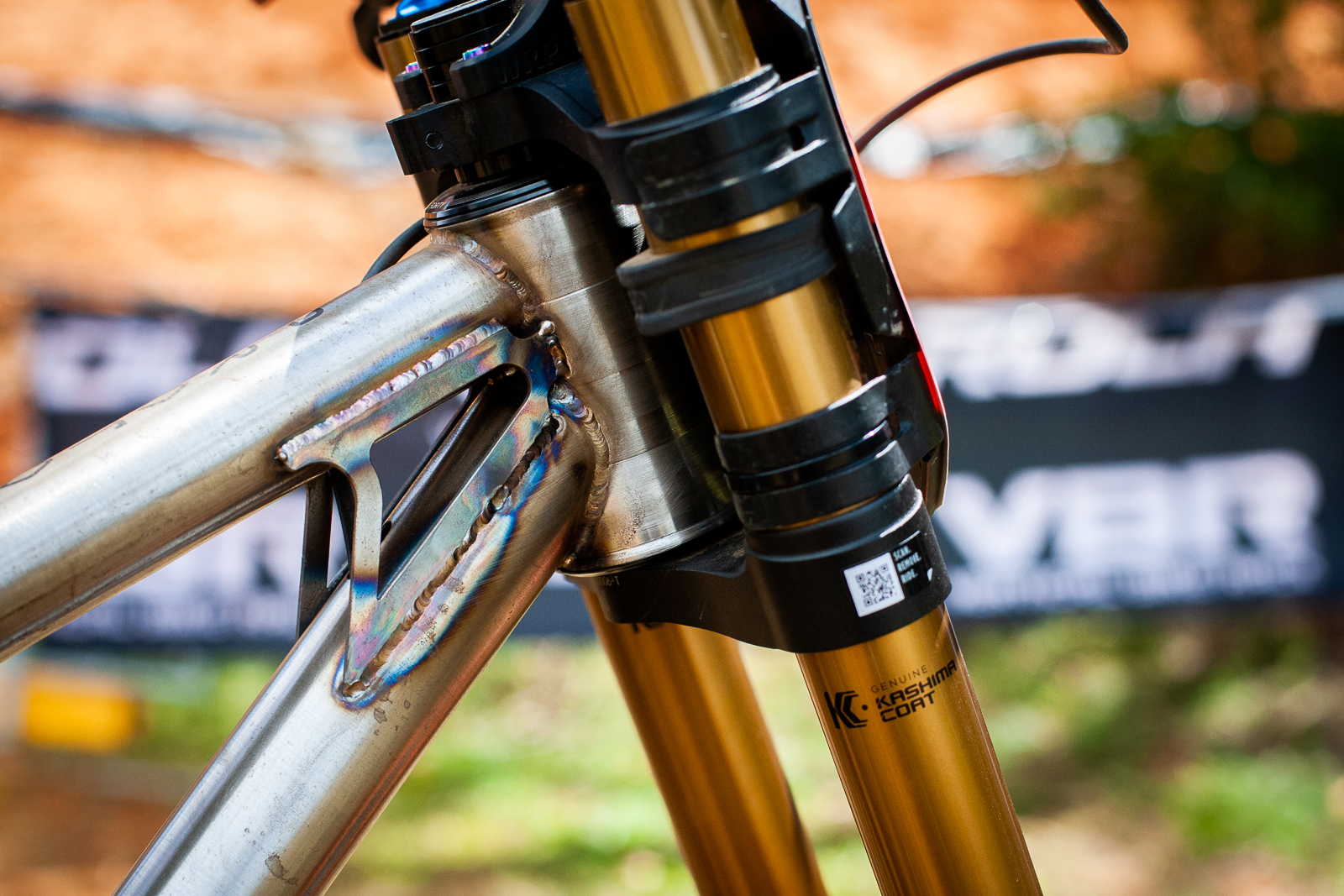
Mic: Yep, this one is a 75mm stroke with 200mm of travel, all the other ones we’ve ridden have been 170mm with 65mm stroke. The flip chip at the front has a 20mm differential so one way you run a 205mm Trunnion and the other way you run a 225mm.
AMB: Is the aim with these two travel options that you could run the same bike for enduro and downhill?
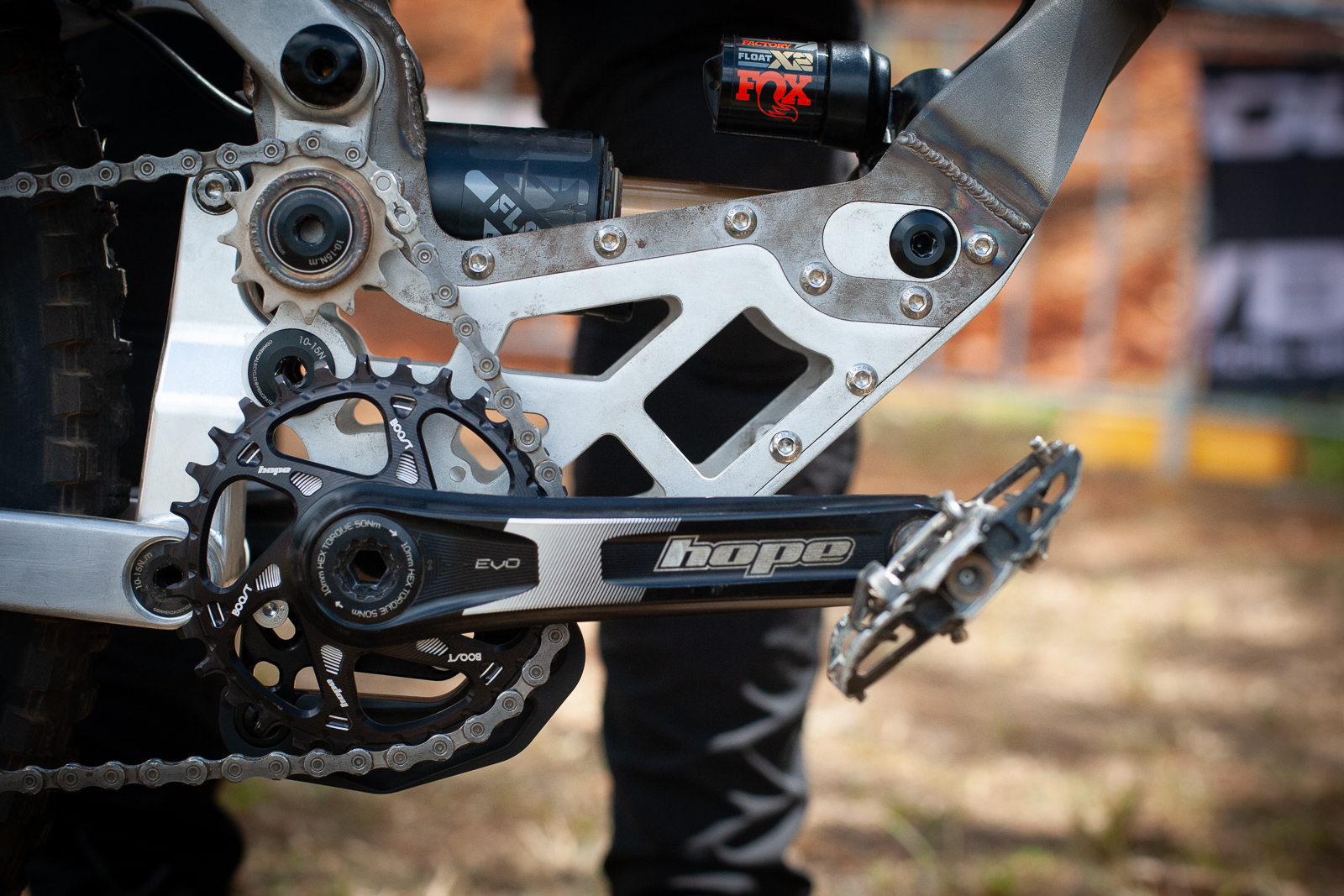
Mic: Definitely. I’ve never raced EWS, but I’ve done the privateer thing in DH and have lots of mates who’re carting two bikes around to ride both DH and EWS. The theory is that with a different fork and shock you do the whole thing on one setup, which would be pretty cool.
AMB: What’s the geometry on this bike?
Mic: 63-degree head angle when paired with a 200mm Fox 40, 465m reach and this is a size large. I normally ride a medium, but we wanted to make a large for our own due diligence.
AMB: What’s the timeframe for production on the bikes?
Mic: We’re pushing for the end of the year/early next. We’ve still got a few modifications but we’re pretty well there.
AMB: Last question, as someone who makes both custom components for bikes alongside your own bike, what are your bugbears with modern bike design?
Mic: There are certainly brands who do it really well, but it kind of bugs me when bike companies aren’t riders themselves.
The only other qualm I’ve got is that everything has been going too long and slack. You’ve got to look at what the World Cup/EWS guys are on. Loic always looks dialled, and his bike is nowhere near as long and slack as some brand promoted bikes out there.

